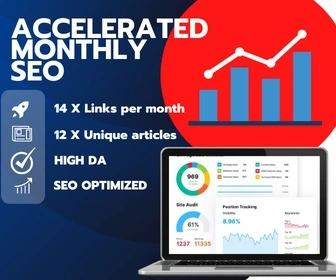If your mobile PPC strategy is not set up, you have a problem. Mobile traffic has already become the fastest growing and most significant segment of paid of SEM traffic. Even if you have a Mobile PPC strategy, you still need to fresh it and make some improvements. Its key that you need to as the slice of the marketing pie is enlarging in the mobile sector. So if you don’t want your overall ROI to drop but to grow then you should focus on mobile. You definitely should see the new SEO for apps course from Adriaan Brits to complete your mobile marketing strategy.
Below is 7 points for a successful mobile PPC strategy.
1 Make your website that it’s optimized for mobile
If your website is not geared toward a responsive design or optimized for a mobile environment then that is the first thing you should change. For example if someone access your website via their mobile handset and they land on your outdated website they might not be able to read the text nor will they be bother to buy from you. Plus if you have an e-commerce site, the site will be not user-friendly as they struggle to guide through the site. More so, without a mobile-optimized site, your metrics will suffer and a significant chunk of money dedicated toward mobile traffic will be wasted.
2 Eliminate mobile traffic in display campaigns
It’s merely out of practicality that you should just leave out display campaigns out of your mobile traffic. The reason is that display campaigns are infamous for their meagre performance on mobile devices. When a user is on their phone, they’re likely using for the most part apps and will only for a short time resort to online browsers to search or research something. Maximum users don’t delight in being interrupted and taken out of whatever app they’re using on a smartphone. That’s why, it’s almost every time a worthy idea to put a mobile bid modifier of -100% on any display campaigns you are running.
However when you are doing remarketing, there is an exception. Using dynamic remarketing for products, let’s say to pay dividends on mobile devices. With this case in point, you will include your mobile traffic simply since it’s just so significant, targeted, and with a bit of luck by this time at ease with to the user. But, unless you have a good reason not to, plan on excluding mobile traffic entirely from your display campaigns.
3 Device bid modifiers proportional to conversion metrics
Your device type will determine your conversion metrics. Therefore, you should ideally use bid modifiers for table and mobile devices to compensate. The impact is that you can save money on your conversion and click costs. This is important as the cost for action for mobile and tablet devices are more than desktop applications, thus you want to bid down on both mobile and tablet devices uniformly. The impact is that you will notice your cost per action decrease. Just keep an eye on your conversion volume. If your conversion volumes decrease too much, since it will as your cost per action lowers, you will need to make alternative modifications to your bid modifiers to recompense for the loss.
4 Expanded text ads
Expanded text ads affords you for use up to 140 characters between your headlines and body text compared to the previous standard of 95 characters. A benefit of expanded text ads are that they tend to take up much more real estate on mobile search engine results pages. The impact is if you use expanded text ad and it lands on the number one spot, it will take up most of the screen space. This is good for your click through rate and click volume.
5 Deep link final URLs within apps
If you have a mobile app and you are trying to re-engage with its customers that have already downloaded the mobile app, and you are using remarketing lists for search ads or if you are following a display remarketing campaign geared towards mobile users, then you can deep-link text ads to a predetermined section on your mobile app as compared to standard web URL. Deep linking ads to very significant content contained by your app will save users time and hindrance. Still, you will need to make certain that whichever ads for a given campaign that make use of deep linking will appear on a tablet or mobile device. You can do this by keeping bids very low and putting a large positive bid modifier on your mobile and tablet devices. You can alternatively leave out computer traffic completely with a bid modifier of -100%.
6 Mobile preferred call extensions
You can create a mobile preferred call extension which will have more chances of showing up on mobile searches. The benefit is that if you have a support line somebody can call for assistance or to conclude a sale, you should use that number in a call extension for each suitable search campaign. People will have access to the call button that will appear next to the text ad instead of going to the landing page. The great thing is that it should improve your company’s conversion rate as this step will eliminate the phrase that the user has to take before potentially converting.
7 Think of other ad extensions for mobile
You should use as many ad extension as you can. Callout extensions and site link can help you take up even more room on top of the SERP and enhance your CTR. If you be able to to show an ad in the top position for a mobile device, and you have site link and callout extensions display beneath your text ad, you could take up nearly the entire screen and drastically increase your visibility.
To conclude
Mobile PPC strategies don’t have to be overly-complicated or overwhelming. If your AdWords account is struggling to succeed on mobile traffic, implement as many of these suggestions as you can and watch your performance improve. If you put these best practices in place and you still don’t see a meaningful lift in your metrics, it may be time to get a professional PPC audit.
You can also contract Adriaanbrits.com, a marketing agency, which specializes in PPC strategy.








